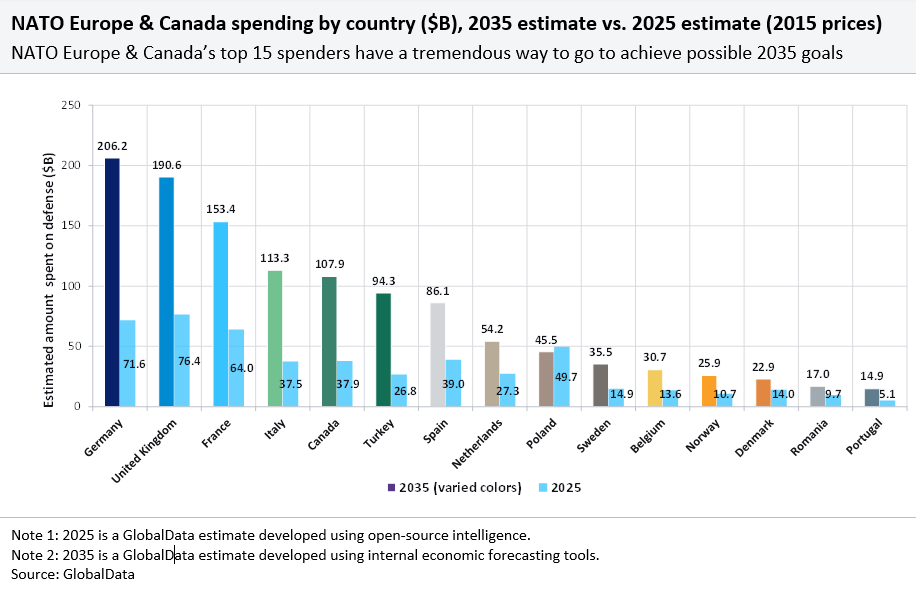In late June 2025, NATO’s 32 member countries will gather in The Hague, the Netherlands, to deliberate on a new defence spending target and the language of a statement addressing Russia’s ongoing war in Ukraine. This meeting comes at a critical juncture for the alliance, as it seeks to bolster its collective defence capabilities in response to evolving geopolitical threats.
First, the alliance will release a statement on the future of NATO’s defence spending target. Allies will convene and must reach a unanimous consensus on the exact wording of the statement. Early indications suggest that NATO allies will agree to a significant increase in defence spending of 5% of GDP by at least 2035. This proposed target represents a substantial escalation from the current benchmark of 2% of GDP, which NATO countries collectively exceed. If adopted, this new target would nearly double the total defence expenditure among member states, reflecting a heightened commitment to national and collective security.
Within the spending question, a few secondary issues emerge. Should the 5% target be ratified, it may be divided into two distinct categories: core defence spending and defence-related spending. Core defence spending would encompass traditional military expenditures, while defence-related spending could include investments in critical infrastructure, cybersecurity and other essential areas that support national defence. NATO is likely to support targets of 3.5% on core defence spending with an additional 1.5% of GDP toward defence-related spending. This breakdown would roughly reflect the 3.4% of GDP on core defence that the United States spent in 2024 (though this figure is expected to decline to 3% in 2025).
The final date by which to achieve 5% is also contentious, as NATO is now discussing the possibility of setting a 2032 target for this level. A date closer to 2035 might emerge as an area of compromise for those allies who are uncomfortable with the spending target. Finally, allies must decide whether to set an interim target for this spending. An interim target, perhaps 3.5% by 2030, would be unprecedented but could help countries that failed to meet the 2% target until recently to make gradual progress.

Where do the Allies stand on the spending issue? The United States, Poland, the Baltic states and others will push strongly for a 5% figure to be reached as soon as possible. In their view, spending more in 2030 or 2035 is not sufficient when there is an ongoing war in Europe. Other states, such as Canada and Spain, will resist this pressure or seek concessions out of concern for their struggling economic situations. In 2024, neither Canada nor Spain achieved 2% of GDP spending on defence, and it is unclear why allies would allow themselves to be bullied into setting lower targets by a few member states who have ignored NATO’s target for a decade. NATO operates by consensus, so no new target can be set without their support.
The second issue the alliance must handle is the publication of a new statement on Russia’s war in Ukraine. The statement may or may not be stronger than NATO’s previous responses, in which NATO “condemns in the strongest possible terms Russia’s brutal and unprovoked war of aggression against Ukraine.” Each part of this phrase will be debated by Allies and all 32 members must agree to the language used. Countries including but not limited to the United States and Hungary will likely advocate for weaker language to be used in the statement. The statement may or may not include new steps that NATO is considering to assist Ukraine, such as command, control, communications, computers, intelligence, surveillance and reconnaissance (C4ISR) capabilities. Previous statements have declared that “Ukraine will join NATO,” so it will be important to watch if the Alliance reconsiders this statement or its open-door membership policy.

US Tariffs are shifting - will you react or anticipate?
Don’t let policy changes catch you off guard. Stay proactive with real-time data and expert analysis.
By GlobalDataSee GlobalData’s recently published report on the past, present, and future of the NATO Alliance for more information.





